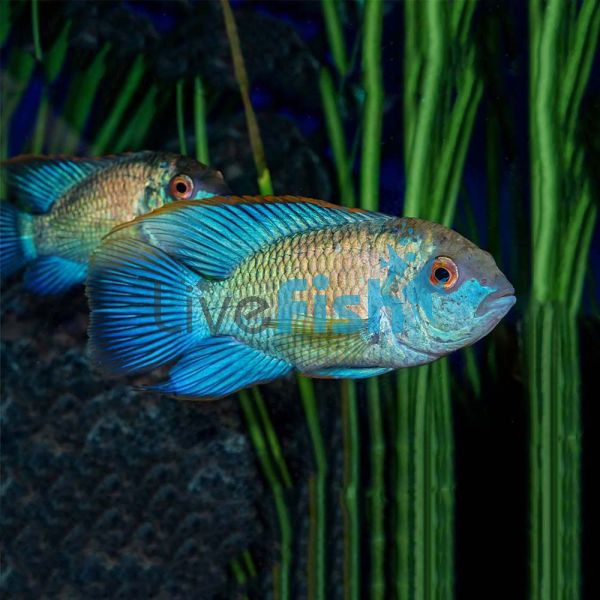Neon Blue Acara 3.5cm
- Buy 2 for $19.44 each and save 10%
- Buy 4 for $17.28 each and save 20%
- Buy 8 for $15.12 each and save 30%
The Blue colour morph of the Pulcher cichlid is fairly new to the Australian Market.
Blue Acaras are generally easy to keep if you are familiar with south american fish. Generally they are relatively peaceful just keep them fish other Americans their own size.
Telling gender is relatively easy on mature fish. Males will be larger and develop a slightly pointed dorsal and anal fin, females are generally smaller and have a more rounded appearance.
South American cichlid native to Venezuela and the island of Trinidad. It is one of the more peaceful of the South American cichlids and can be kept in a community aquarium with less aggressive American cichlids. This is an imposing robust species native to Central America. Best kept in large aquaria with similar sized American Cichlids, Plecostomus etc. Provide plenty of hiding places as they can be territorial. Like most American Cichlids, the Black Belt's colours intensify as they mature.
Grows to 25-30cm.
More than 225 species, with estimates of 300 species, of cichlids are found throughout South America. An estimated 75% of these inhabit the mighty Amazon River Basin. Cichlids are also found in Central America, where they are well-known for their pugnacious behavior and their stunning colors. Most of these cichlid are large, thus requiring large tanks. These fish inhabit most types of water ways throughout Central America including lakes, streams, rivers, even underground water sources.
Their colorful appearance, the many different species available, their behavior and their breeding are just some of the reasons the Cichlids are one of the most popular aquarium fish.
Due to their aggressive behavior, the tank for cichlids should be as large as possible, with its length being more critical than its height; meaning the longer the better.
In the Cichlid tank there must be places of refuge. These can be rock caves, large pieces of driftwood or even inverted flowerpots. Most large species of Cichlids will dig up the substrate material, and occasionally will remove plants from the substrate. The Angelfish, Discus and the dwarf species Apistogramma all prefer a densely planted tank.
The water temperature should be in the range of 24-28 degrees celsius, slightly higher for the Discus. The diet should consist of live and frozen food of all kinds as well a large flake staple food. Large specimens can be feed Earthworms, garden Crickets and kitchen leftovers.
| Scientific Name | Aequidens Pulcher |
|---|




